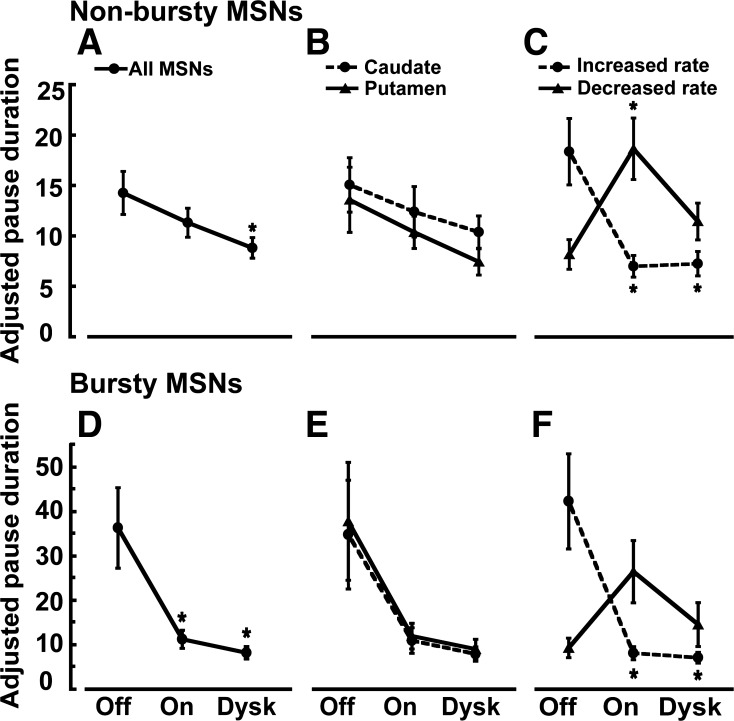Fig. 8.
Changes of adjusted pause duration (APD) in nonbursty and bursty MSNs in the transition to different motor states. In nonbursty MSNs, APD decreased in the on state (A), and this change was similar in caudate and putamen (B). Analysis in MSN subpopulations as distinguished by the activity increase or decrease in response to dopamine stimulation (D1 and D2 receptor-like responders, respectively) (C) shows that APD decreased in D1 receptor-like responders and increased in D2 responders in line with the effects of firing frequency changes. In the transition to the on-with-dyskinesias state, there are no significant changes of APD in any subgroup of nonbursty MSNs with respect to the on state. In bursty MSNs, APD decreased in the on state (D), and this change was similar in caudate and putamen (E). In MSN subpopulations with rate increase or decrease in response to dopamine stimulation (F), APD decreased in D1 receptor-like responders and increased in D2 receptor-like responders, again following the firing frequency changes. Also, in the transition to the on-with-dyskinesias state, there are no significant changes of APD in any subgroup of bursty MSNs with respect to the on state. Data points in all graphs are means ± SE. *P < 0.05 vs. off state; factorial ANOVAs for repeated measures followed by Bonferroni tests.

